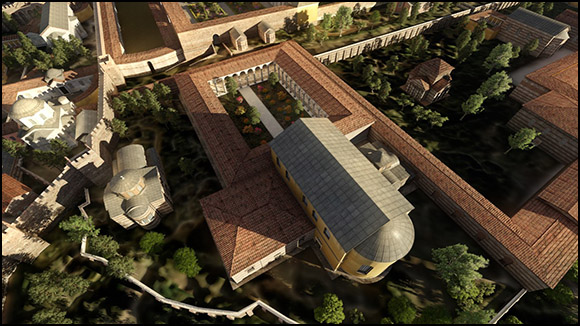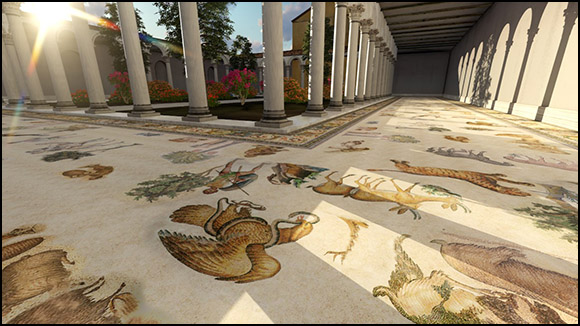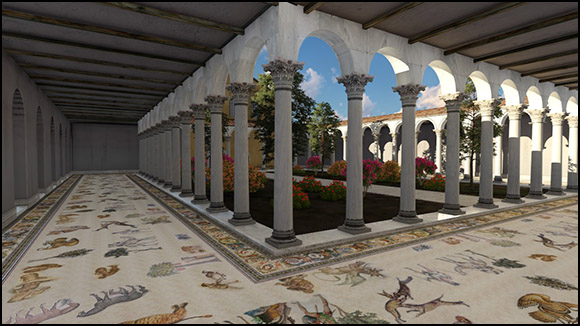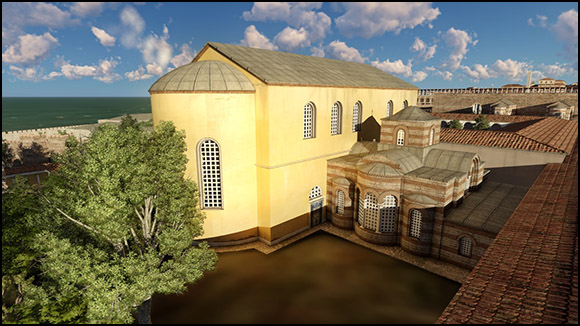


  |
MOSAIC PERISTYLE |
 |
 INTRODUCTION
INTRODUCTION
 CONTENTS
CONTENTS
 HIPPODROME
HIPPODROME
 WHAT'S NEW
WHAT'S NEW
 MUSEUM
MUSEUM


 LINKS
LINKS
 AWARDS
AWARDS

The complex that comprises a large peristyle and an adjoining apsed hall remains the most important discovery in the Great Palace area. The original floor of the peristyle was an elaborate mosaic pavement. The surviving mosaics with mythological, bucolic, hunting and circus scenes are displayed (partly in-situ) in the Mosaic Museum that was built on the site of this magnificent palatial building.

The peristyle and the hall date to the late sixth or early seventh century (reigns of Maurice, Phocas or Heraclius) judging by the pottery sherds found beneath the mosaics and stamped bricks and leveling courses of greenstone used in the construction of the buildings. The complex underwent several changes, most strikingingly the rebuilding of the south-east and the north-west colonnades as corridors with windows, and its mosaics were covered with marble slabs (possibly before c. 700). The apsed hall (and probably what was formerly the peristyle) was in ruins by the middle of the twelfth century. Ever since its discovery, scholars have been discussing the possible identification of this complex, without reaching any general agreement. For example, two recent attempts identified it either as the Augusteus (a reception hall in the Constantinian section of the Palace) or as the Apsis (a structure at the cross-road of the palace itineraries). It is also possible that the apsed hall and the mosaic peristyle may have served as a meeting place where the emperor would appear to the circus factions after such ceremonies were withdrawn from the Tribunal (which happened, according to the eighth-century Parastaseis, during Heraclius’ reign) but before they were established in Justinian II´s Phialai. The construction of this complex may be therefore associated with Heraclius (610-641).




